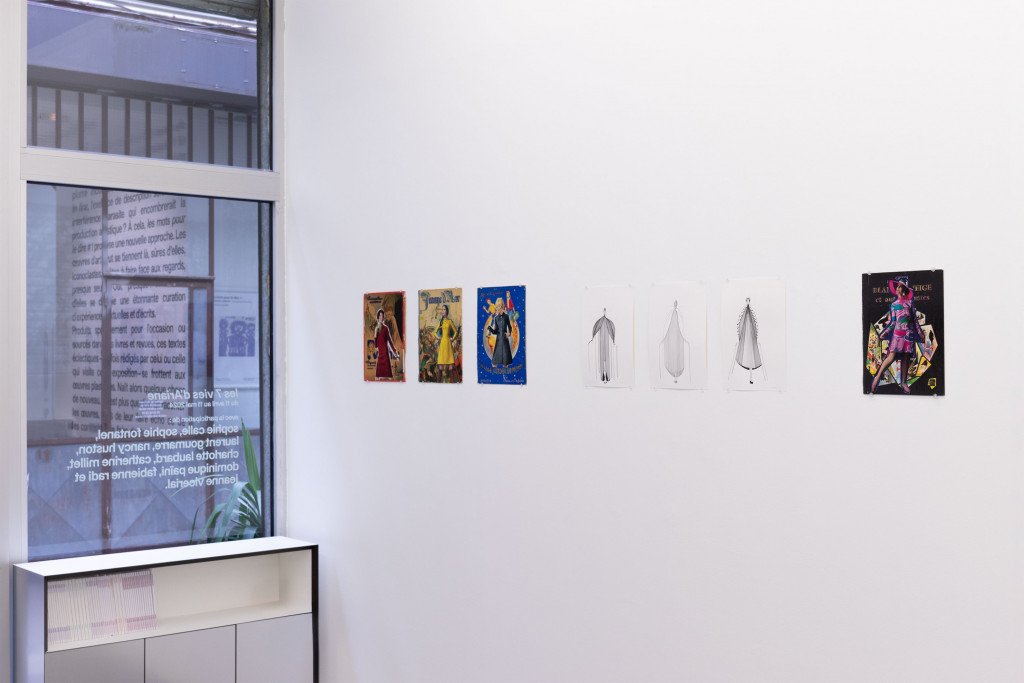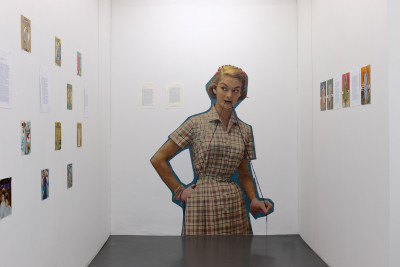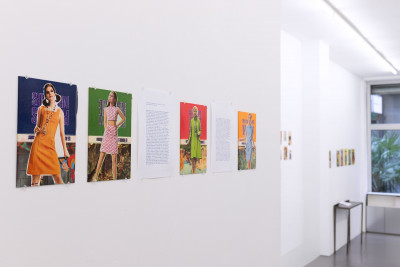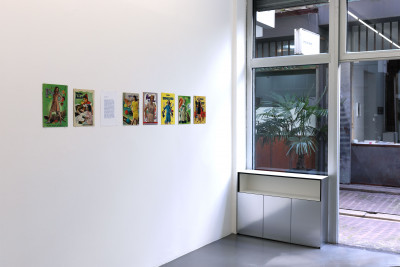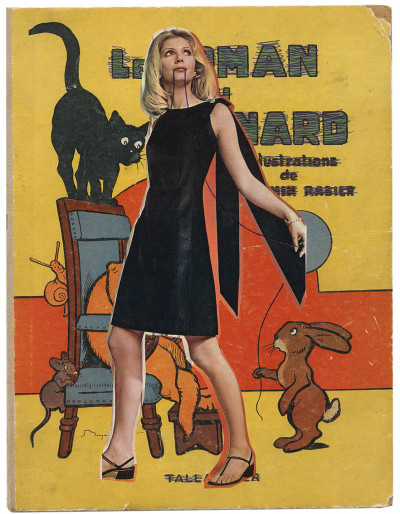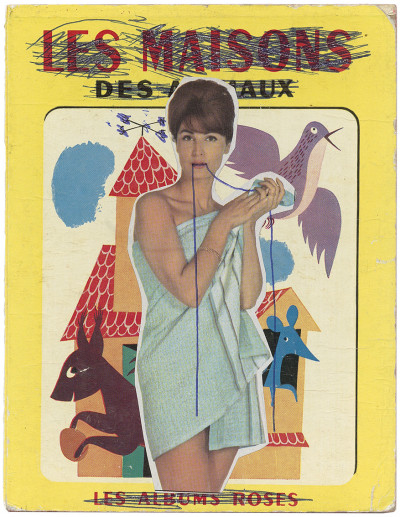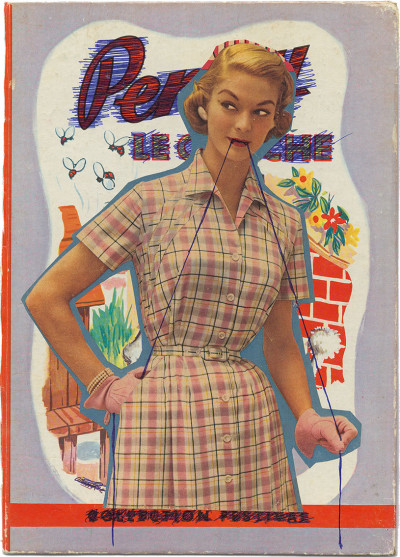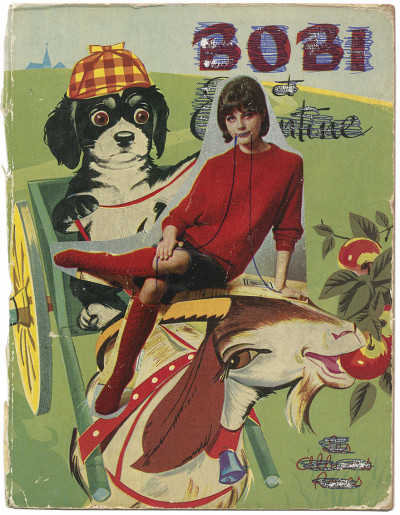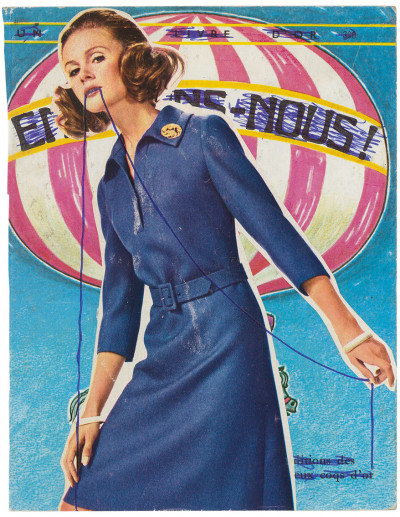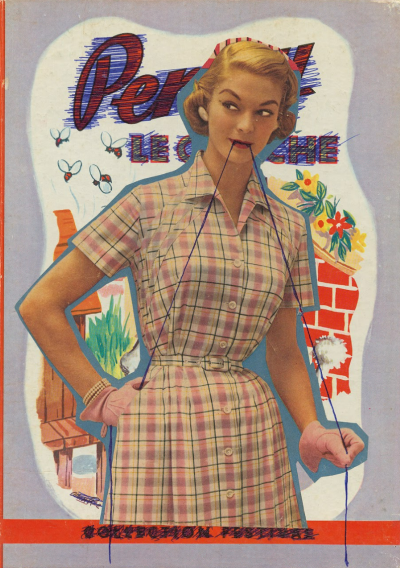The seven lives of Ariane
What delicious vertigo for an art lover to discover a group of “works” whose meaning and nature remain as impenetrable as the mystery surrounding their creator seems thick. It’s a feast for the senses and the mind to let yourself be led by clues and your own references in an attempt to grasp what’s going on here. It’s a question of moving forward with the enigma as your only compass, knowing from the outset that no certainty will emerge from the undertaking.
Paradoxically, once we are free of the usual paratextual muddle and formulaic contextual straitjacket, we can hope to approach the truth of a work. In its nakedness, one might say.
Here we have more than four hundred covers of children’s books, strangely transfigured, emerging from trunks bought at a jumble sale: the titles, authors’ and publishers’ names have been summarily crossed out in biro; collages of cutout silhouettes of female fashion models—obviously taken from catalogues from the 50s and 60s—partially obliterate the original illustrations on the covers; but the most striking thing is the line drawn with the same blue biro, escaping from the corners of the models’ mouths and ending up in their hands in a graceful, ceremonial fall.
It’s hard not to be taken aback by this Unheimliche—this uncanniness provoked by the meeting of two worlds, that of childhood, shrouded in serene candour, and that of an adult obsession, disturbed and unsettling in its hallucinatory reiteration. The tension that results from this duality does not seem fortuitous, given the subtle chromatic and narrative harmonies that can be discerned here and there.
So what was the aim of the person we will call—by analogy with the mythology of the thread—“Ariadne”? Was it an attempt at reparation? An exercise in overcoming buried traumas? What dull violence is hidden behind these sweet icons of outdated femininity, these metaphors of an outraged childhood, these annihilated texts, these blue threads like bits and reins with which these women hobble themselves?
These existential chromos are such powerful allegories that the question of whether we are in the presence of a work of art is beyond optional. In fact, it’s uncalled for, judging by their superior capacity to move us.
With the participation of: Sophie Calle, Sophie Fontanel, Laurent Goumarre, Nancy Huston, Charlotte Laubard, Catherine Millet, Dominique Païni, Fabienne Radi and Jeanne Vicerial.
Thus, emerging from trunks acquired in a flea market, are over four hundred covers of children’s books strangely transfigured: the titles, names of authors, and publishers have been summarily crossed out with a ballpoint pen; collages of cut-out silhouettes of female fashion models—taken from catalogs from the 50s and 60s—partly obscure the original illustrations of the covers, but the most striking thing is this line drawn with the same blue ballpoint pen and escaping from the corners of the models’ lips to end in their hands in a fall as graceful as ceremonial.
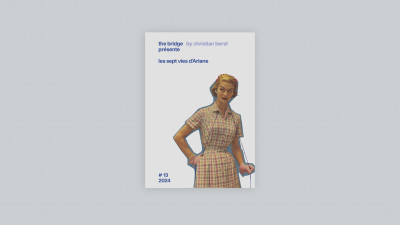
catalog published for the exhibition
the seven lives of Ariane
from april 11th to may 11th, 2024
foreword: christian berst
preface: manuel anceau
With the participation of : Sophie Calle, Sophie Fontanel, Laurent Goumarre, Nancy Huston, Charlotte Laubard, Catherine Millet, Dominique Païni, Fabienne Radi and Jeanne Vicerial.
Get the catalog: click here
